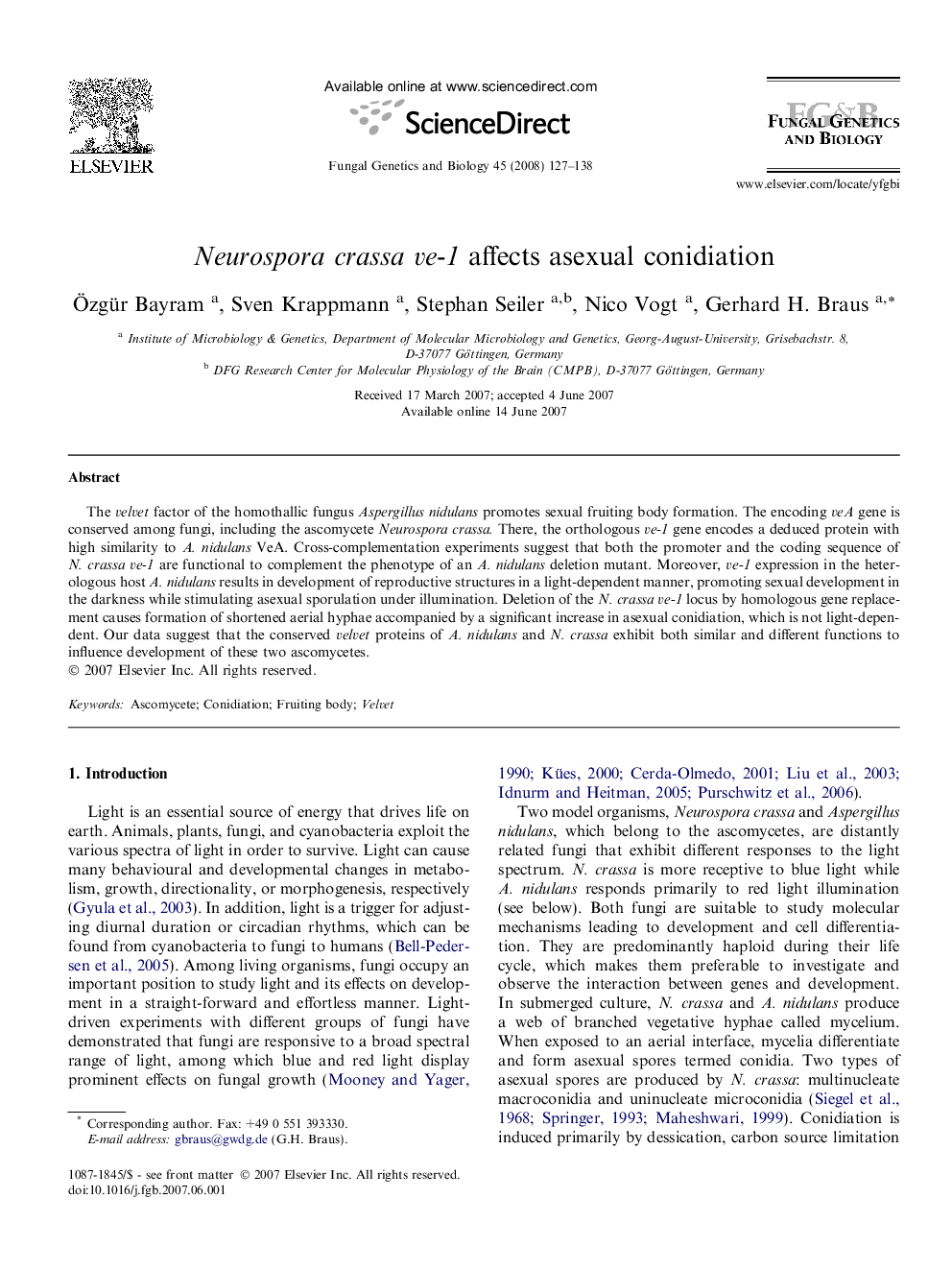| Article ID | Journal | Published Year | Pages | File Type |
|---|---|---|---|---|
| 2181537 | Fungal Genetics and Biology | 2008 | 12 Pages |
The velvet factor of the homothallic fungus Aspergillus nidulans promotes sexual fruiting body formation. The encoding veA gene is conserved among fungi, including the ascomycete Neurospora crassa. There, the orthologous ve-1 gene encodes a deduced protein with high similarity to A. nidulans VeA. Cross-complementation experiments suggest that both the promoter and the coding sequence of N. crassa ve-1 are functional to complement the phenotype of an A. nidulans deletion mutant. Moreover, ve-1 expression in the heterologous host A. nidulans results in development of reproductive structures in a light-dependent manner, promoting sexual development in the darkness while stimulating asexual sporulation under illumination. Deletion of the N. crassa ve-1 locus by homologous gene replacement causes formation of shortened aerial hyphae accompanied by a significant increase in asexual conidiation, which is not light-dependent. Our data suggest that the conserved velvet proteins of A. nidulans and N. crassa exhibit both similar and different functions to influence development of these two ascomycetes.
